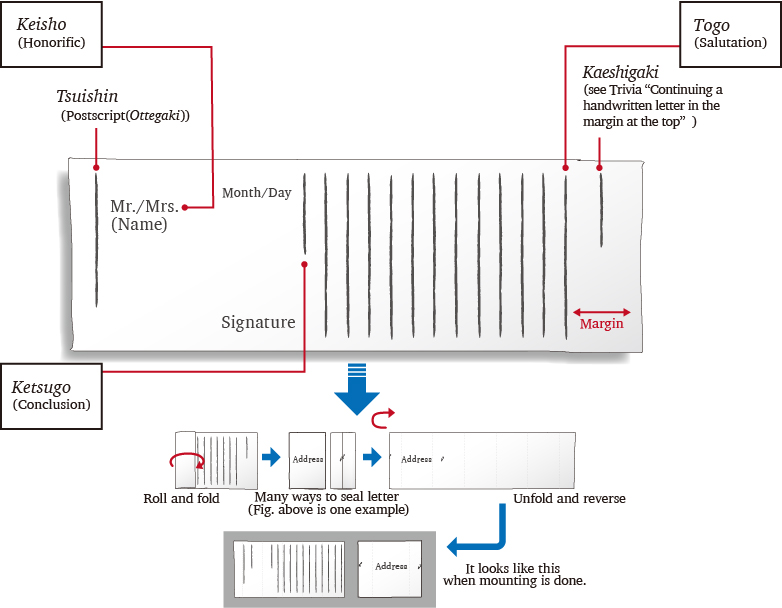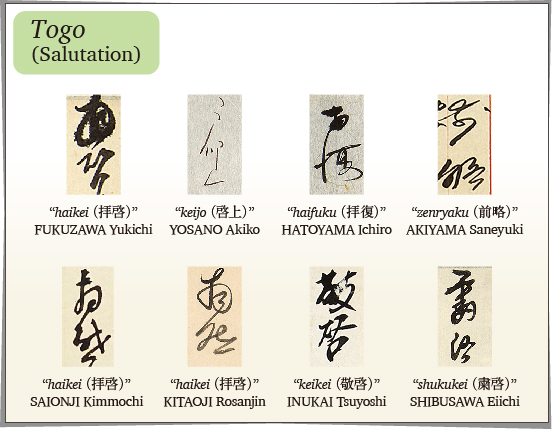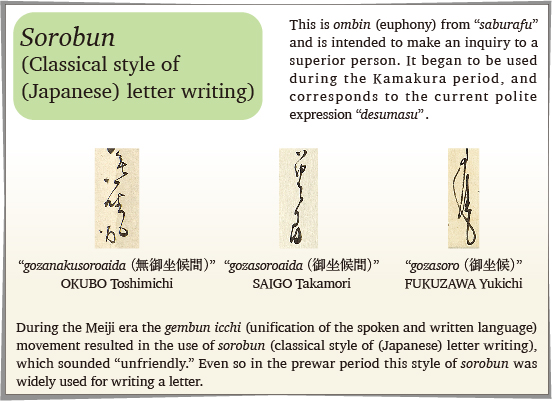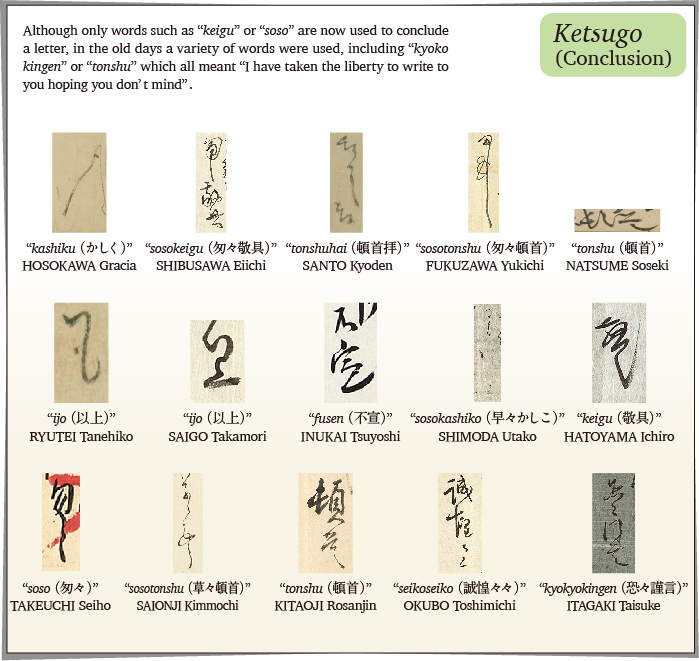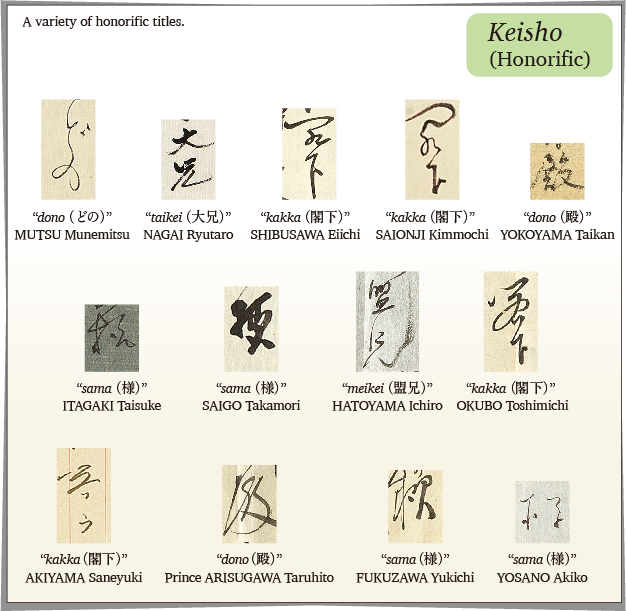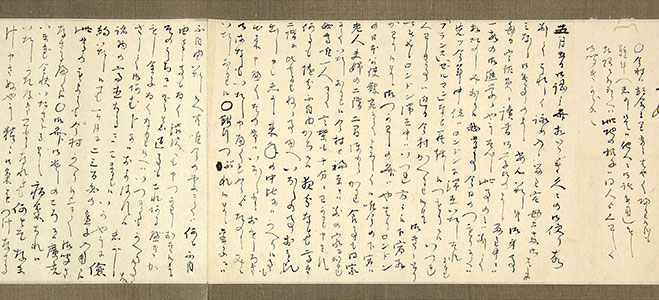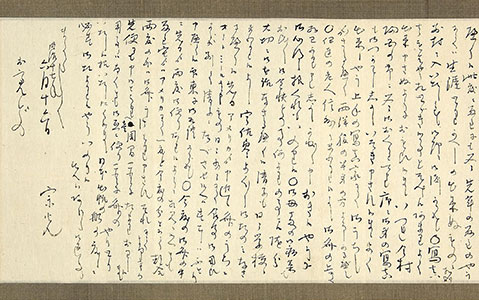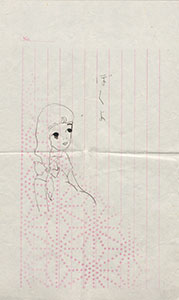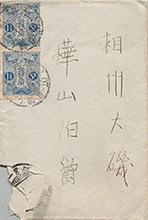Chapter 4 Letters to families
MUTSU Munemitsu, 1844-1897
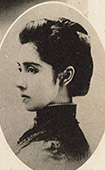
 A diplomat and politician in the Meiji era. Mutsu, acting with Sakamoto Ryoma including his participation in the Kaientai, successively assumed posts after the Meiji Restoration that include Governor of Hyogo Prefecture, sozei gashira (Ministry of Finance official), and a member of the Chamber of Elders. In 1878, he resigned due to his involvement in the Tosa-Risshisha Incident and was in prison for five years. After being released from the prison, he visited Europe and the Americas and then entered the Ministry of Foreign Affairs. He was elected in the first election of the House of Representatives, served as Minister of Agriculture and Commerce, and assumed the post of Minister of Foreign Affairs of the second Ito Cabinet through which he contributed to revision of an unequal treaty and conclusion of the Treaty of Shimonoseki. His second wife was well known for her striking good looks and the art of communication which made her be called “the belle of Rokumeikan (a social dance hall built by the Meiji government)” and “the queen of the society in Washington” while accompanying Mutsu who was appointed ambassador to the United States.
A diplomat and politician in the Meiji era. Mutsu, acting with Sakamoto Ryoma including his participation in the Kaientai, successively assumed posts after the Meiji Restoration that include Governor of Hyogo Prefecture, sozei gashira (Ministry of Finance official), and a member of the Chamber of Elders. In 1878, he resigned due to his involvement in the Tosa-Risshisha Incident and was in prison for five years. After being released from the prison, he visited Europe and the Americas and then entered the Ministry of Foreign Affairs. He was elected in the first election of the House of Representatives, served as Minister of Agriculture and Commerce, and assumed the post of Minister of Foreign Affairs of the second Ito Cabinet through which he contributed to revision of an unequal treaty and conclusion of the Treaty of Shimonoseki. His second wife was well known for her striking good looks and the art of communication which made her be called “the belle of Rokumeikan (a social dance hall built by the Meiji government)” and “the queen of the society in Washington” while accompanying Mutsu who was appointed ambassador to the United States.
129 Mutsu Munemitsu shokan, June 16, 1884[Mutsu Munemitsu Papers: 55]
A letter addressed to his wife Ryoko from Mutsu who was staying in the United Kingdom. Mutsu traveled in Europe and the Americas from April 1884 to February 1886. The letter sent during his trip shows his concerns about his family. His letter says that he hoped his wife would send her photo and also exchange letters every week even without any important matters, which vividly exhibiting his devotion to his wife.
OYAMA Iwao, 1842-1916
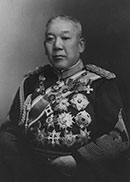 An army officer in the Meiji era and cousin of the Saigo brothers, Takamori and Tsugumichi. He served in the Boshin War and studied in Europe after the Meiji Restoration. After returning, he played an active role in the army and was given the posts of genro (elder statesman), then acted as Commander of the Second Army in the Sino-Japanese War, General in the Russo-Japanese War, and also Commander of the Manchuria Army. Then he successively served as War Minister, Chief of the General Staff, and Lord Keeper of the Privy Seal. His second wife was Oyama (her maiden name Yamakawa) Sutematsu who was one of the first Japanese female students who studied abroad.
An army officer in the Meiji era and cousin of the Saigo brothers, Takamori and Tsugumichi. He served in the Boshin War and studied in Europe after the Meiji Restoration. After returning, he played an active role in the army and was given the posts of genro (elder statesman), then acted as Commander of the Second Army in the Sino-Japanese War, General in the Russo-Japanese War, and also Commander of the Manchuria Army. Then he successively served as War Minister, Chief of the General Staff, and Lord Keeper of the Privy Seal. His second wife was Oyama (her maiden name Yamakawa) Sutematsu who was one of the first Japanese female students who studied abroad.
130 Oyama Iwao shokan, May 28, 1877[Oyama Iwao Papers (deposit): 33-2]
A letter addressed to his wife Sawako in Tokyo from Oyama amid the Satsuma Rebellion. In the letter, he asks her to send a set of summer clothes to him in Kagoshima and tell his nephew Takejiro to bring an ice cream maker when he comes to Oyama upon his call. Oyama went to the Satsuma Rebellion as Commander-in-chief of the Detached 1st Brigade of the new government army, where he faced a tragedy to defeat his own cousin Saigo Takamori. However, this letter shows no sign of the tragic atmosphere but his preparedness for a long-term battle.
SHIRASU Masako, 1910-1998
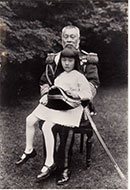 An essayist. The second daughter of Kabayama Aisuke, a businessman and Member of the House of Peers. Her husband was Shirasu Jiro, who was also a businessman and well known for his active role played as a close advisor to Yoshida Shigeru during the period of the Allied Nations' occupation. With the basis of critic activities in a wide range such as noh, antiques, and Japanese classical literature, she wrote many books including travel writings. She is also known as the first woman who performed on a noh stage. In the photo, Masako with her grandfather Kabayama Sukenori.
An essayist. The second daughter of Kabayama Aisuke, a businessman and Member of the House of Peers. Her husband was Shirasu Jiro, who was also a businessman and well known for his active role played as a close advisor to Yoshida Shigeru during the period of the Allied Nations' occupation. With the basis of critic activities in a wide range such as noh, antiques, and Japanese classical literature, she wrote many books including travel writings. She is also known as the first woman who performed on a noh stage. In the photo, Masako with her grandfather Kabayama Sukenori.
131 Shirasu Masako shokan, October 1, 1920[Kabayama Sukenori Papers (No.2): 57]
A letter addressed to her 84-year-old grandfather Kabayama Sukenori from Masako (her maiden name Kabayama) at 11. Masako mentioned in Shirasu masako jiden (autobiography, 1994) that she called herself in a young age boku (a term usually used when boys refer to themselves). This letter confirms this in her comment “boku-yo (This is me.)” attached to her self-portrait. Her grandfather Kabayama was a military officer and politician originally from Kagoshima who was awarded the title of count for his active role played in the Satsuma Rebellion and the Sino-Japanese War. He successively assumed posts including Navy Minister, Governor-general of Taiwan, and Home Minister.
Formatting of letter in the old days
From late Edo period to Meiji and Taisho eras people used makigami (refer to Trivia "Sizes and types of paper") for writing a letter. Brief explanation regarding letter's formatting and manners are as follows.
